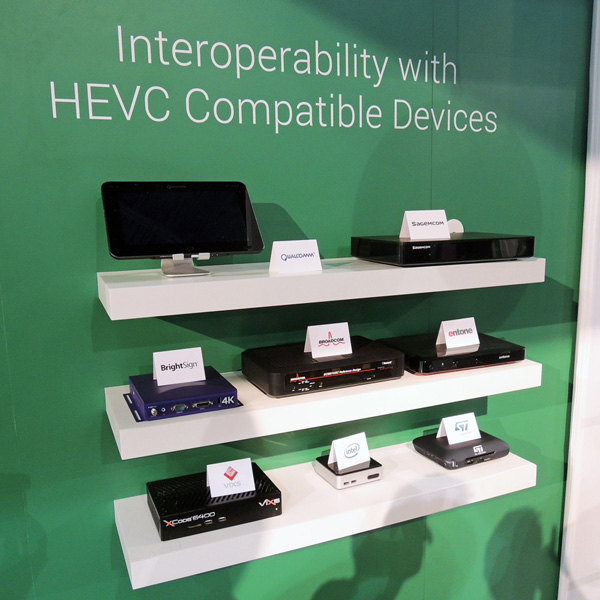Broadcast & Distribution – It has become increasingly clear that consumers are moving to streaming and cloud downloads to watch TV shows and movies at home. This trend, which has been documented by numerous research firms and news organizations, reached a “tipping point” in 2011 when more video was acquired via streaming and downloads than by the traditional method of renting or purchasing optical discs.
I’ve been staying on top of this phenomenon ever since 2005, when optical disc purchases began a slow, steady decline. A few years later, DVD rentals also turned south and have stayed there ever since. The blue laser format wars of 2005 – 2006 did nothing to reverse this trend: Blu-ray disc sales have not nearly made up for the fall-off in packaged media sales and rentals.
Netflix, of course, carries the blame (or credit) for this reversal of fortune. The company now has over 50 million subscribers worldwide, with over 30 million of them stateside. Their clout has increased to the point where agreements have been negotiated with Comcast, Time Warner, Verizon and other MSOs to ensure Netflix can stream its movies and TV shows with minimum guaranteed bit rates.
At the receiving end, we’ve seen increasing competition by internet service providers to boost their download speeds. Although Verizon’s FiOS service lies buried in my front yard, ready for tapping, I still rely on Comcast for video, VoIP, and broadband. (For now, Verizon is a “useful idiot” when I complain to Comcast about ever-escalating costs.)
A quick check with the CNET Broadband Speed Test shows my download speeds at 10am average 17 – 20 Mb/s, which is certainly faster than they were a year ago. But they’re not nearly as fast as those encountered in South Korea, Zurich, Brussels, Hong Kong, or even Chattanooga, Tennessee.
An article in Friday’s New York Times explores why the U.S. has fallen behind in providing faster internet service and offers up some intriguing data from a group called the New America Foundation’s Open Technology Institute. In many countries, governments regulate or control telecommunications services and have made the necessary investments to upgrade their broadband networks.
In contrast, broadband delivery in the U.S. is largely dominated by Comcast, Time Warner, AT&T and Verizon, which appear to be motivated solely by the bottom line. There are exceptions, such as the aforementioned Chattanooga, where the city offers service through a publicly-owned and operated fiber optic backbone and Kansas City, where Google took over an existing ISP and has been upgrading to fiber with haste.
What about the rest of Americans, particularly those in areas limited to DSL or even satellite broadband (always unpredictable)? Some hope may lie in the new High Efficiency Video Codec (HEVC), a.k.a. MPEG-H H.265. This codec promises to reduce bit rates by 50% over H.264, allowing delivery of 1080p/60 content to homes with adaptive bit rates in the vicinity of 1 – 2 Mb/s. Not coincidentally, that is the average download speed found in a majority of U.S. homes between 9pm and 11pm, when video streaming is heaviest.

An exhibit of HEVC-compatible set-top boxes in the Elemental booth at NAB 2014
Hand-in-hand with improved broadband service comes cord-cutting, or dropping pay TV channel packages in favor of streaming. A recent report by The Diffusion Group shows that 14% of all broadband homes don’t subscribe to pay TV, up from 9% in 2011. The report states that about 75% of U.S. households now have broadband service, so 13 million homes are doing just fine without the likes of DirecTV and Comcast.
I’ve written previously about the growing outflow of pay TV customers and how the pay TV industry saw its first net loss in subscribers in 2013. This trend hasn’t gone unnoticed by media companies: HBO announced last month that it would launch a streaming service for $15 per month that would reach a large, younger population of viewers who have no interest in cable subscriptions.
CBS followed suit the next day, announcing an “all access” subscription for $6/month to all its owned stations, current programming (viewed a day later), and an enormous archive of older yet still popular TV shows such as Star Trek and Cheers (two shows that, ironically, originally ran on NBC!). And yes, there are mobile apps for all of this.
The convergence of cord-cutting and improved broadband connections has economists wondering if we are finally reaching the era of “a la carte TV”. In an intriguing paper posted on the Knowledge@Wharton Website, the author ponders if consumers would be better off with a la carte (pick your own channels) services, or if costs would skyrocket and diminish the value of choice.
One thing is for certain: Speed drives need. Just as improvements to the highway system in this country led to bigger, faster, and more comfortable cars, faster broadband access (no matter where it comes from), coupled with more efficient video codecs, will lead to more cord-cutting and a shift in video content delivery and consumption online at the expense of conventional TV channel viewing.
It’s all about the pipes… – Peter Putman

